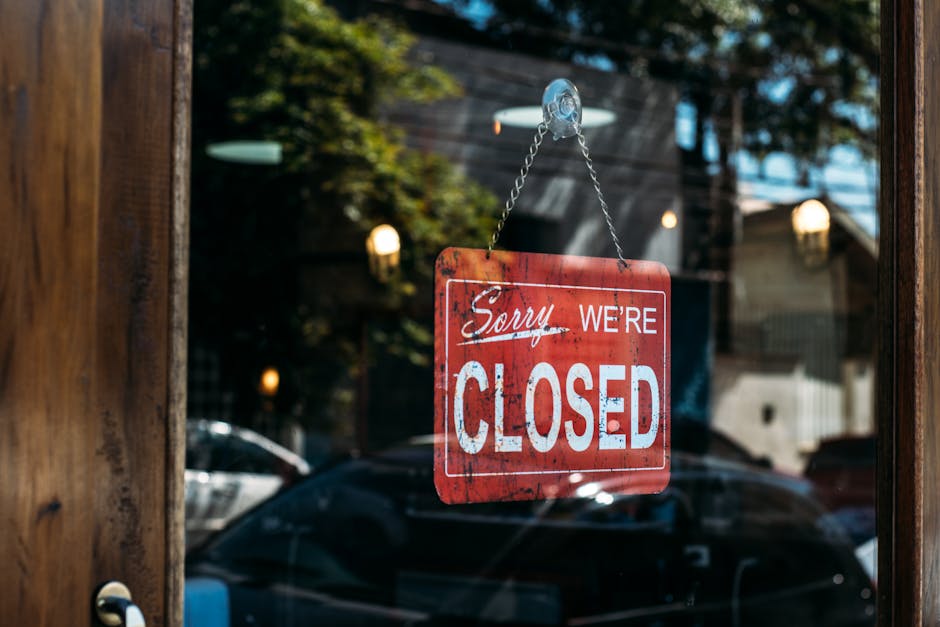Why Shopping Malls Are Dying
In recent years, there's been a noticeable decline in the foot traffic at shopping malls . Once bustling centers of activity, many have found themselves struggling to justify their vast square footage.
Several factors contribute to this phenomenon that can be observed in cities across the globe.
This article aims to delve into these reasons and offers an in-depth understanding of why shopping malls are on the brink of extinction.
We will also explore the paradigm shift in consumer behavior and the rise of new retail alternatives that have punctuated this declining trend.
So, come take this journey with us as we unravel the mystery behind the dying shopping malls .
E-commerce: The New Shopping Frontier

Photo by Karolina Grabowska on Pexels
Brick-and-mortar shopping malls are slowly giving way to the rise of e-commerce, a new frontier in the world of retail.
The convenience offered by online retailers, combined with the increasing trust in digital transactions, has seen consumers gradually shift from traditional shopping experiences . With just a few clicks, shoppers can now browse thousands of products, compare prices, and read reviews before making a purchase.
Moreover, the rise of mobile devices and advancements in technology have made online shopping even more accessible. E-commerce platforms are now able to provide personalized experiences, leveraging data analysis to predict individual customer preferences .
Despite this digital revolution, physical stores are far from obsolete. They are evolving to integrate with e-commerce, creating a more holistic shopping experience. Yet, there's no denying that e-commerce has significantly altered the retail landscape.
Shift in Consumer Shopping Habits

Photo by Ron Lach on Pexels
In recent years, there has been a significant shift in consumer shopping habits.
Today, more people prefer online shopping over traditional brick-and-mortar stores. With just a few clicks, one can browse, compare, and purchase products from the comfort of their own home. This convenience has created a powerful pull away from mall culture.
Moreover, consumers are increasingly prioritizing experiences over material possessions. Many prefer to spend their money on dining out, travel, and other experiences versus buying tangible goods .
Lastly, there has been a tangible shift towards a more sustainable and conscious consumption. People are making more deliberate choices, often leaning towards brands with greener processes and products.
This transformative change in consumer behavior has undeniably contributed to the apparent decline of shopping malls.
The Exponential Growth of Online Retailers

Photo by Ivan Samkov on Pexels
Over recent years, traditional brick and mortar stores have seen a steady decline in foot traffic, coinciding with the exponential growth of online retailers.
Flexible shopping hours, unlimited product choices, and the convenience of home delivery, have attracted a large flux of consumers towards online platforms .
Digital giants like Amazon and Alibaba have significantly changed the retail landscape. The convenience of comparing prices, reading user reviews, and subsequently making purchase decisions from the comfort of one's home has become incredibly appealing to the modern consumer.
Moreover, the onset of the global pandemic accelerated this switch by pushing even the most hesitant consumers online , for their safety. This continued shift in consumer behavior doesn't bode well for the future of shopping malls.
The decline of shopping malls doesn't just signify a change in business models, but a transformation in consumer behavior propelled by the rise of online retailers.
Impact of High Retail Space Rent
It's no secret that the prohibitive cost of retail space rent has had a devastating impact on the viability of businesses within shopping malls . In numerous cases, these high rents have simply become untenable for retailers to handle, resulting in a ripple effect of store closures.
Smaller, independent shops are particularly vulnerable and less able to navigate these financial hurdles, often leading to the loss of originality and diversity within malls. Even big-name brands are not immune, as they also grapple with the struggle of balancing cost versus revenue gained from their physical stores.
Finally, the high land cost in prime areas forces developers to maximize rental income, indirectly encouraging the proliferation of chain stores and franchises. This can eventually lead to a homogenized shopping experience , which further deters shoppers from frequenting malls.
The Growing Importance of Convenience

Photo by Karolina Grabowska on Pexels
In an era where time is of the essence, the convenience of online shopping has led to the downfall of traditional brick-and-mortar shopping malls.
Today's consumers prefer to shop at home, on the move, or essentially anywhere internet access is available. This flexibility is something shopping malls cannot match .
Moreover, online platforms cater to a variety of needs without requiring customers to move from one store to another. With just a few clicks, purchases are made and deliveries arranged.
The shift towards convenience has even extended to the ability to compare prices across multiple online retailers in a matter of seconds, an impossible feat in the physical retail environment.
Ultimately, the rise of convenience and online shopping is reshaping the retail landscape, leaving shopping malls trailing behind in the dust of their more adaptable, digital counterparts.
Rise in Environment Consciousness

Photo by ready made on Pexels
The shift towards a more sustainable lifestyle has certainly played a pivotal role in the decline of shopping malls. As people are becoming increasingly conscious about their environmental footprint, excessive consumption is being discouraged.
Individuals are now tending towards mindful shopping - getting what they need, not what they want. This new trend isn't just about buying less, but also about buying better. Purchasing products that are long-lasting and produced ethically is now being favored over the quick, cheap buys often made in malls.
Further discouraging mall shopping is the excessive waste generated by these behemoth structures. From energy consumption to waste generation, shopping malls have a heavy environmental cost. An increasing number of people are choosing to reject this and opt for more environmentally friendly shopping alternatives . The foundation of these choices lies in the rise of environmental consciousness amongst consumers .
Millennials and Gen Z's Shopping Preference

Photo by William Fortunato on Pexels
In recent years, a shift in buying behavior has been observed among Millennials and Generation Z. Unlike their predecessors, they are more inclined towards online shopping .
Worldwide, it is evident that these young adults prefer digital shopping rather than strolling through malls. This has been a significant influence on the rapid closure of malls.
Why the preference for online shopping? Convenience comes first. The younger generations want to shop at their own pace, without the limitation of store hours or location. They value the immediacy of purchases and access to a wider array of choices.
In addition, they are conscious buyers. They believe in researching, reading reviews, and comparing prices before making a purchase. Traditional shopping malls, unfortunately, cannot offer these advantages.
This drastic change in shopping preference is leading to the death of many shopping malls.
COVID-19 and the Final Blow

Photo by Kaique Rocha on Pexels
COVID-19 hit the world like a thunderbolt, throwing life as we know it into disarray. Complicated by lockdowns and social distancing measures, retail shopping took a significant blow.
Many shopping malls, already struggling to keep foot traffic flowing , faced a bleak reality. As our homes became our entire world - offices, schools, gyms and more, the pandemic forced an accelerated shift towards e -commerce.
Brick and mortar stores saw a sharp decline as consumers prioritized health and safety, opting to shop from the comfort of home. Hygiene measures and restricted opening times compounded the struggle for malls.
Many businesses permanently shut their doors, while others barely managed to stay afloat. The pandemic, acting as the proverbial last straw, may have marked the beginning of the end for traditional shopping malls.


